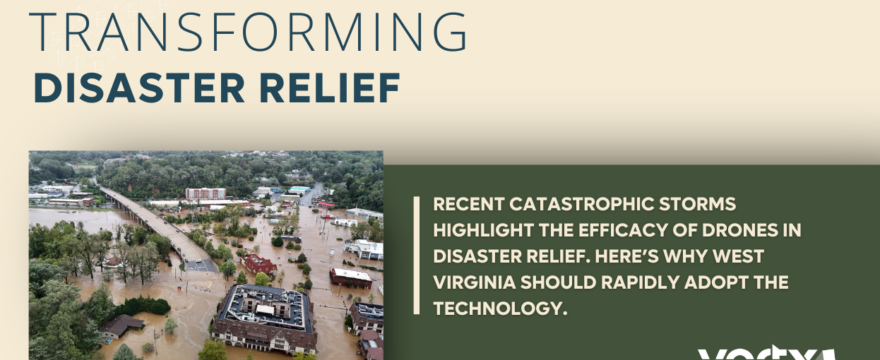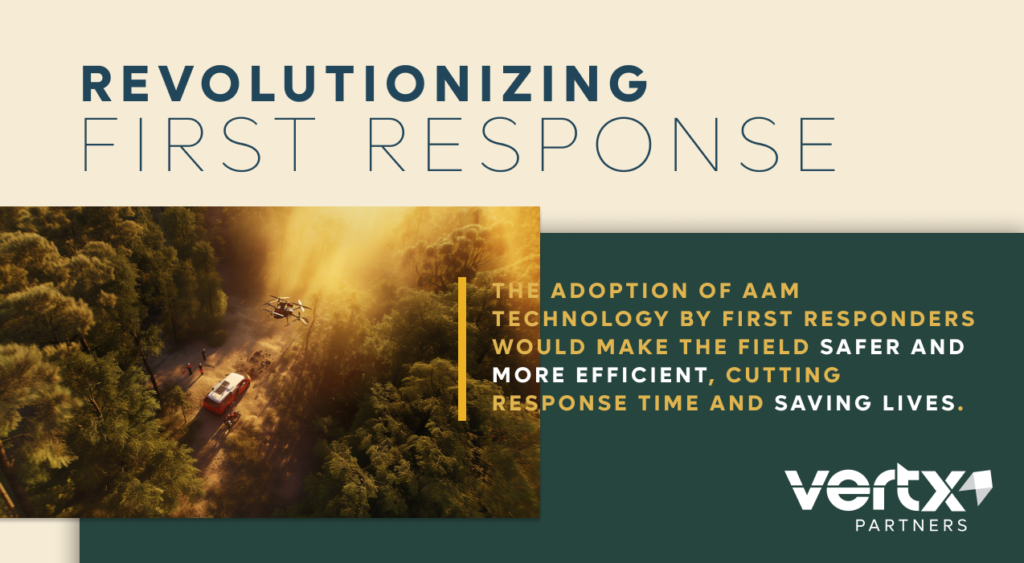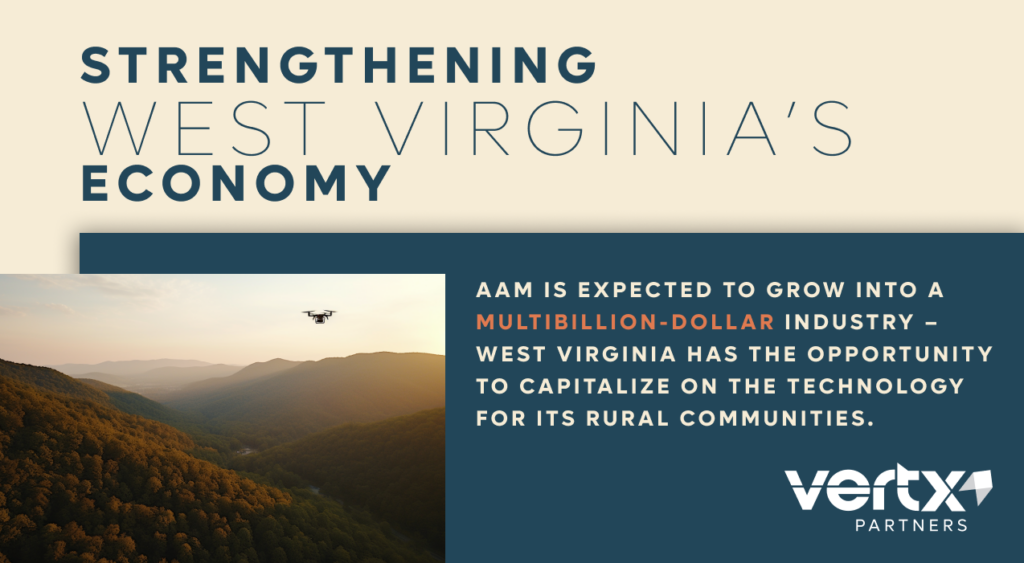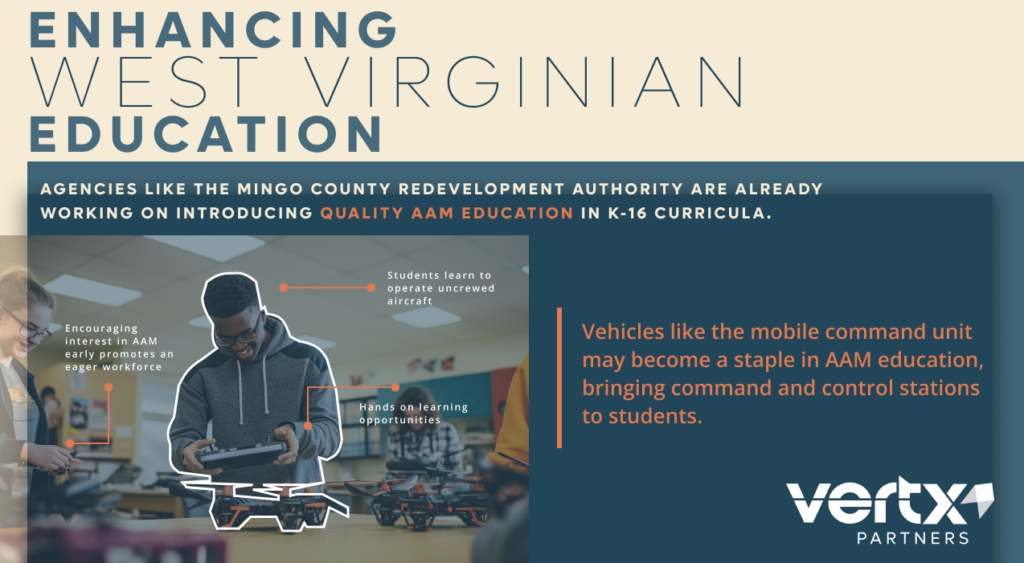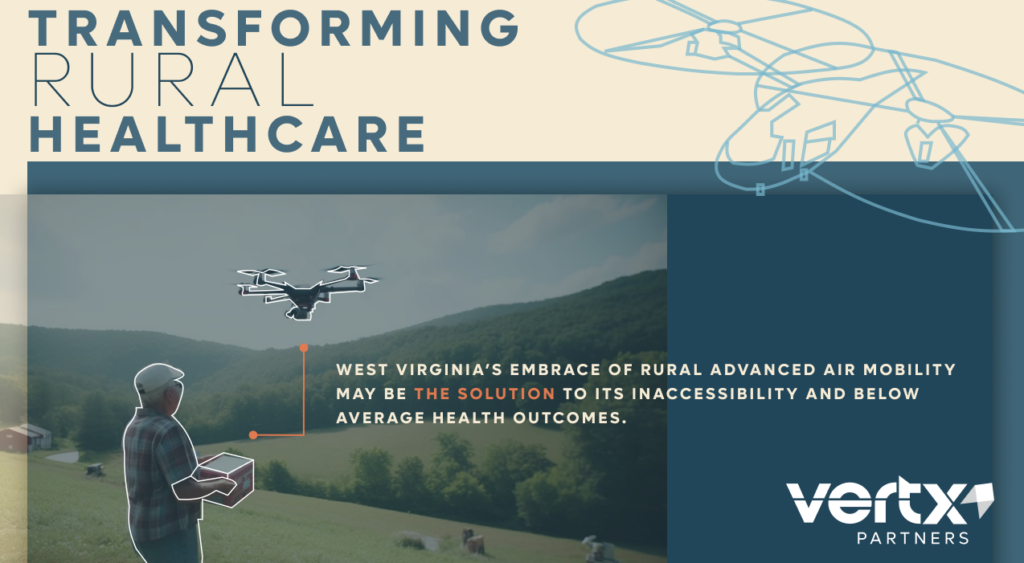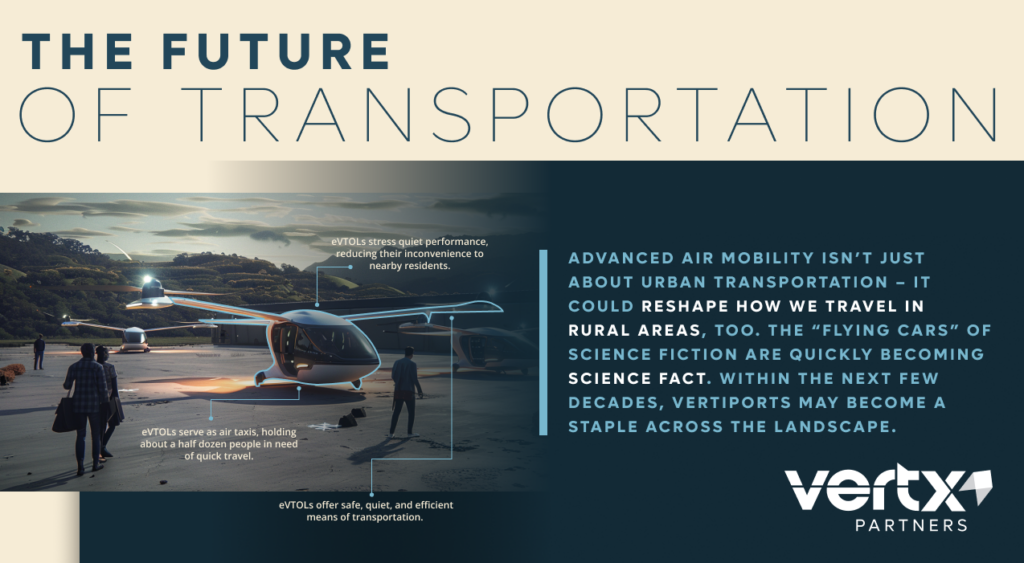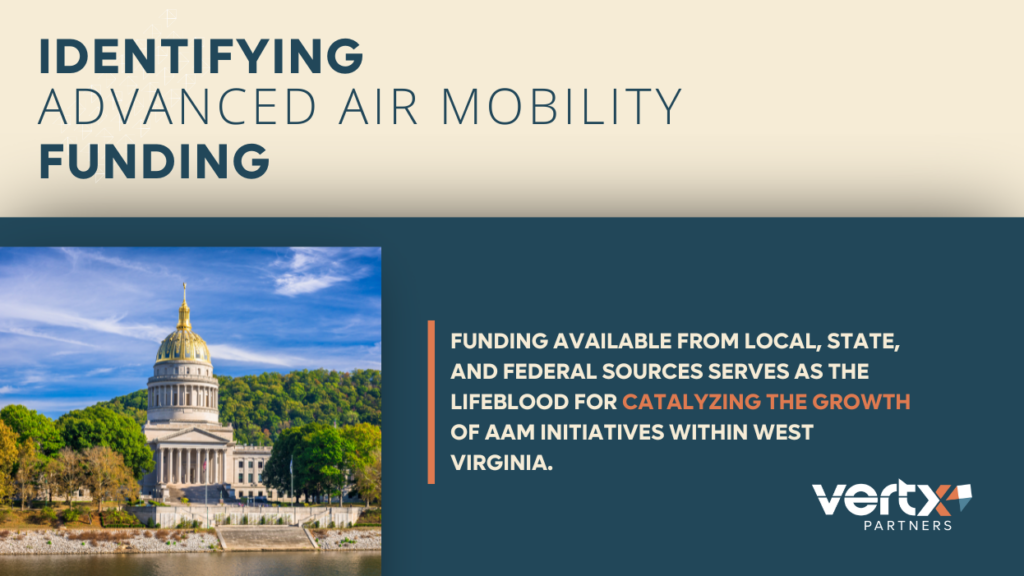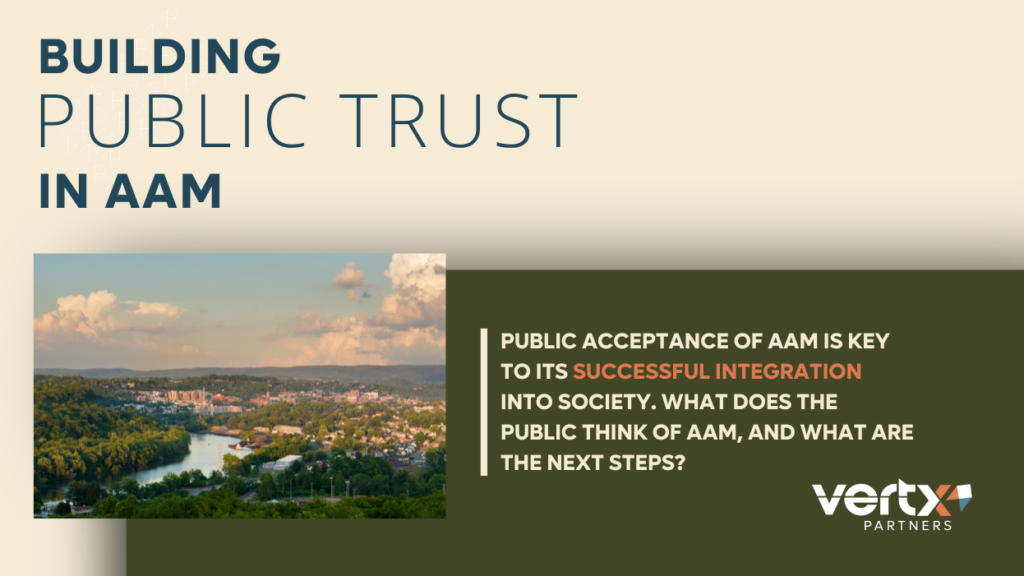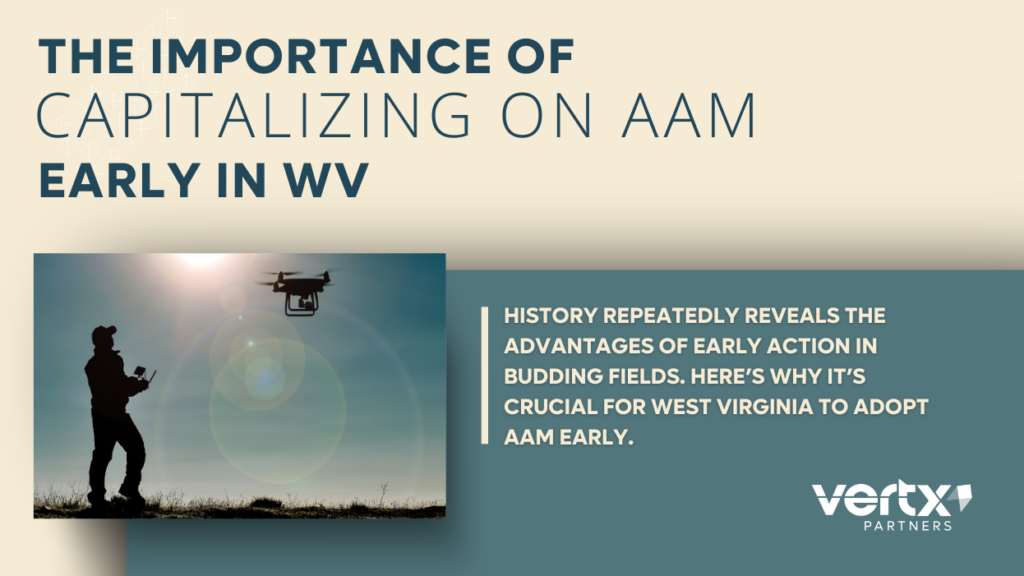Recent catastrophic storms highlight the efficacy of drones in disaster relief. This article explores several use cases, and makes an argument for WV adopting the technology.
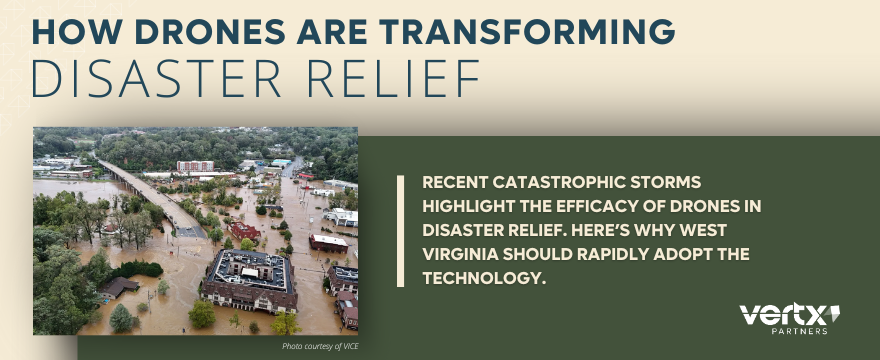
Recent devastating hurricanes in the Southeastern United States highlight the role of drones in disaster relief and recovery as communities from Florida to North Carolina struggle to return to normalcy.
Hurricanes Helene and Milton left entire regions without power, transportation, or accessible medical aid. Luckily, drones aid workers deployed to fill critical gaps in the response infrastructure. Drone technology is redefining how relief efforts are conducted, providing essential support and innovative solutions to challenges that have historically hindered recovery efforts.
Advanced Air Mobility (AAM) technologies like drones could transform local emergency response efforts for regions like West Virginia, where flooding and other natural disasters are prevalent. This article explains how.
Drones’ Role in Hurricane Relief: Real-World Impact
Following Hurricane Milton’s destruction across the Florida Panhandle, the Florida Army National Guard utilized Teal 2 military drones from Red Cat Holdings, Inc. to assess damage, locate survivors, and support first responders in search and rescue missions. Portable, durable, and swift to deploy, drones like the Teal 2 offered the National Guard a strategic advantage by allowing rescue teams to access remote or heavily damaged areas quickly and efficiently.
Similarly, Skydio, one of the largest U.S. drone manufacturers, stepped up to provide drone support in response to Hurricane Helene. As the hurricane’s impact ravaged North Carolina communities with flooding and mudslides, Skydio’s drones conducted damage assessments and search operations. According to Skydio, while helicopters are essential for large-scale relief operations, drones offer “quicker, more cost-effective deployment,” particularly in areas with rugged terrain where traditional vehicles and equipment cannot operate safely. By offering drones equipped with cameras and spotlight attachments, Skydio assisted in restoring basic infrastructure and helping disaster response teams prioritize their efforts effectively.
An inspiring example of civilian drone involvement came from Bestway Ag, an agricultural technology company based in Hopkinsville, Kentucky. Bestway Ag’s volunteer drone pilots flew heavy-lift drones carrying up to 230 pounds of supplies to isolated communities in NC. Working with local emergency services, the volunteers delivered critical items such as food, water, and medicine to stranded residents. The mountainous terrain required the team to fly high-altitude routes beyond the visual line of sight (BVLOS) of their operators. This feat further demonstrated the adaptability and effectiveness of drones in disaster relief settings.
Virtual Sandtable: A Vertx Partner
Lastly, Virtual Sandtable, a software company, offered another innovative solution by providing mapping and photogrammetry services to aid responders. Their eBee Tac drones were flown in strategic patterns over the impacted areas, capturing real-time video and thermal data to locate survivors and assess structural damage. Using satellite communication and high-precision GPS, Virtual Sandtable’s technology provided responders with detailed data to prioritize resource allocation. This approach enabled volunteer groups to receive tasking orders in real-time, improving response efficiency during critical moments.
Virtual Sandtable also happens to be a member of the Vertx Partners cohort. Vertx is currently assisting Virtual Sandtable win future federal contracts.
How Drones Could Help West Virginia Disaster Relief
Though particularly severe, the impacts of Hurricanes Helene and Milton are not isolated events. For communities in Appalachia – such as those in West Virginia – extreme weather events are becoming more frequent and intense. Flash flooding, in particular, poses a significant risk to the region.
The devastating June 2016 floods in Southern West Virginia are a stark reminder of the damage such events can inflict. That year, 8 to 10 inches of rain within 12 hours resulted in flash floods that swept through communities. The storm ultimately claimed 23 lives and caused widespread devastation. Several communities are still recovering to this day.
As climate change continues to affect weather patterns, scientists expect these “1,000-year events” to become more common. Drones, already proving their value in hurricane recovery, could help mitigate the effects of such events in West Virginia. With the ability to deliver life-saving supplies and provide aerial assessments of damage, drones could offer Appalachian communities a new line of defense when traditional infrastructure fails.
For example, high-capacity drones, like those used by Bestway Ag, could deliver food, water, and medication to hard-hit, remote communities. Additionally, drones equipped with thermal cameras and other advanced sensors could help search for individuals stranded or unreachable by ground teams. In mountainous and wooded regions, drones provide an “eye in the sky” advantage. This would enable responders to survey damage swiftly, map out potential hazards, and plan efficient rescue operations.
Advanced Air Mobility & Sustainability in West Virginia’s Future
Beyond immediate disaster response capabilities, AAM technologies represent an opportunity for West Virginia to advance in energy-efficient technologies.
As the global AAM movement aligns closely with clean energy initiatives, electric drones, and even electric vertical takeoff and landing (eVTOL) vehicles offer a path to reduce the carbon footprint associated with traditional disaster response methods, which often rely on fuel-heavy aircraft and vehicles. The idea of West Virginia, a state known for its rich history in energy production, embracing renewable technology in AAM would demonstrate a progressive approach toward reducing carbon emissions and preparing for climate impacts.
In the face of increasingly frequent and severe weather events, West Virginia could lead in utilizing drones in disaster relief. By integrating drones and similar technologies into its emergency response systems – and developing a workforce equipped to use them – the state could not only provide immediate benefits to its residents but also showcase a commitment to sustainable practices and technological innovation.
Through partnerships with companies like Vertx Partners and by drawing inspiration from recent successes in drone-assisted disaster relief, West Virginia could become a national leader in both Advanced Air Mobility and climate-resilient infrastructure.
